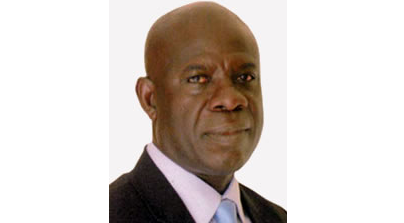
Privately managed pension funds have maintained their robustness in growth over the past four years, with contributions under the tier two and three schemes hitting an all-time high of GH¢8.3 billion at the end of July, this year.
The amount comprises funds accrued in the temporary pensions fund account (TPFA) at the Bank of Ghana (BoG) and total assets under management (AUM) by licensed trustees.
NPRA’s Chief Executive Officer, Mr Hayford Atta Krufi, said the authority was “closely working towards the transfer of contributions of public sector workers in the TPFA from January 2010 to August 2016.”
He was speaking to the paper ahead of the GRAPHIC BUSINESS/ STANBIC BANK Breakfast Meeting on Tuesday, September 19 at the Labadi Beach Hotel in Accra. The meeting is on the theme, “The Role of Pensions in Economic Development”
On when the funds will be transferred from the TPFA, Mr Krufi explained: “A number of progressive meetings have been held with key stakeholders, including the trustees of the public sector schemes, their administrators, the government and the CAGD,” he said.
Impact on economy
Over the past four years, growth in the tier two and three pension funds has averaged 70 per cent on a yearly basis, as more employers and employees come to terms with the three tier pension scheme introduced in 2010.
From a modest sum of GH¢805.1 million in 2012, tier two and three contributions, which are managed by private schemes, rose to GH¢2.6 billion in 2014 before closing last year at GH¢6.8 billion.
The increment from GH¢6.8 billion in December 2016 to GH¢8.3 billion in July, this year, represents a growth rate of 22.1 per cent within the seven-month period, consistent with the average annual growth rate.
The strong growth in the pension funds is good news for the economy, given the multiplier effects. The funds are a good source of liquidity for the financial markets, where a chunk is invested in equities and other money market funds.

Although encouraging, the Chief Executive Officer of Axis Pensions, Mr Afriyie Oware, told the GRAPHIC BUSINESS his outfit expected the growth rate to edge up in the coming years.
With many people now embracing the tier three, which is a voluntary scheme, Mr Oware said he expected trustees, both public and private workers to contribute more to help drive up the growth.
“We think that the growth rate could even be better than what we have. Because the tier three is voluntary, the interest is building gradually and the private sector has been the driver.”
“However, we have seen interest from a number of public worker groups and unions that are considering provident funds for their members,” he said.
Beyond benefiting the various contributors, he said increased contribution means stable capital for long-term investments.
A typical case, he said, was the recent easing in yields on short-term debts.
“If you look at the trend in rates coming down, you will realise that it is not because of government’s lengthening the yield curve but because a new institutional investor is on the block, which is pension funds.
“So, government is tapping into the long-term capital that these funds provide and that is making it possible for the government to correct the yield curve,” he said.
He mentioned the improvement in liquidity on the Ghana Stock Exchange (GSE) as another benefit that would now be deepened by the recent revision to the investment guidelines governing investment of the funds.
Status of TPFA
Although relatively new, more businesses have taken advantage of the tiered nature of the pensions industry to set up institutions.
Currently, the industry has 131 service providers, including trustees, pension fund managers and custodians. Additionally, 243 institutions have registered and are operating as pension schemes.
Beyond the direct contributions from employees and their employers, these institutions rely heavily on the transfers from the TPFA to be able to survive.
This makes the continuously hold up of the GH¢2.7 billion at the TPFA a challenge to the schemes and the economy.
The NPRA data showed that some GH¢556 million, comprising total contributions and accrued interest from the TPFA, had so far been transferred.
It represented contributions of 258,422 private sector workers under 8,116 employers.




